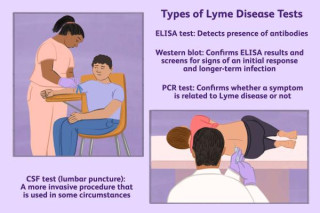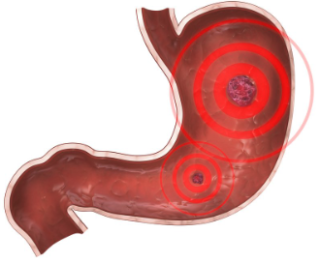A test for Lyme diseasecreated at May 06, 2009 57 57 The most common test for Lyme disease is a two-tiered serological test.The first tier is an enzyme-linked immunosorbent assay (ELISA) or immunofluorescence assay (IFA) to detect antibodies against Borrelia burgdorferi,the bacterium that causes Lyme disease...  |
Understanding Your Risk: How Likely Are You to Get Breast Cancer?created at May 03, 2009 91 91 Your risk of developing breast cancer depends on many factors,including your age,family history (especially if a close relative had breast cancer at a young age),genetic mutations (like BRCA1 and BRCA2),race / ethnicity,density of your breast tissue,lifest...  |
Demystifying Pancreatic Cancer: What You Need to Knowcreated at May 04, 2009 962 962 Pancreatic cancer is a serious disease characterized by uncontrolled growth of cells in the pancreas,a vital organ located behind the stomach.Its notorious reputation stems from its often late diagnosis,due to vague initial symptoms like abdominal pain,jau...  |
Demystifying Liver Cancer: Understanding the Basicscreated at May 04, 2009 125 125 Liver cancer,primarily hepatocellular carcinoma (HCC),develops when healthy liver cells become cancerous,often due to long-term liver damage from conditions like hepatitis B or C,alcohol abuse,non-alcoholic fatty liver disease (NAFLD),and certain genetic d...  |
Understanding the Link: Cirrhosis and Liver Cancer Riskupdated at Nov 29, 2024 1,945 1,945 Cirrhosis,a late stage of scarring (fibrosis) of the liver,significantly increases the risk of developing liver cancer (hepatocellular carcinoma).The chronic inflammation and damage caused by cirrhosis create an environment conducive to the development of ...  |
Understanding Colorectal Cancer: A Vital Insightcreated at May 04, 2009 111 111 Colorectal cancer, the second leading cause of cancer-related deaths in the United States, presents a significant public health concern. Despite its alarming prevalence, advancements in detection and treatment have contributed to a decline in mortality rat...  |
Precision in Practice: Understanding LEEP for Cervical Cancer Diagnosiscreated at May 04, 2009 76 76 Loop Electrosurgical Excision Procedure (LEEP) is a precise and effective method employed in the biopsy process for diagnosing cervical cancer. This procedure involves the skillful use of an electric wire loop to delicately slice off a thin, round piece of...  |
Decoding Diagnosis: Unraveling the Path to Detecting Cervical Cancercreated at May 04, 2009 94 94 Detecting cervical cancer involves a systematic approach, with the pelvic exam and Pap test serving as crucial initial screenings. These tests enable doctors to identify abnormal changes in the cervix, prompting further investigation if necessary.In cases ...  |
Empowering Women's Health: Early Detection of Cervical Cancer"created at May 04, 2009 80 80 Prioritizing regular pelvic exams and Pap tests emerges as a powerful strategy for the early detection and prevention of cervical cancer. These essential screenings play a pivotal role in identifying precancerous conditions, allowing for timely interventio... |
How do I read my Pap smear results so that I can understand them?created at May 04, 2009 167 167 Results Description Follow-up Within Normal Limits No abnormal cells detected. Return for pelvic exam and Pap test in one year. Atypia Cells of Uncertain Significance ASCUS Some cells show a few chan... |
Understanding the Family History of Stomach Cancercreated at May 04, 2009 75 75 Family history plays a crucial role in understanding an individual's risk of developing certain diseases, including stomach cancer. When several close blood relatives have been diagnosed with or have had stomach cancer, it significantly heightens the risk ...  |
How do you diagnose thyroid cancer?created at May 04, 2009 63 63 The doctor will ask about your medical history and will do a careful physical exam, with special attention to feeling your thyroid and checking for lumps in the neck. You may also be asked to have a blood test or special scans. The best screening test for ... |